Surrounded by stately live oaks in the heart of city founder Newitt Vick’s original town plat, Anchuca was built in the 1830s and is individually listed on the National Register of Historic Places and also lies within a National Register Historic District.
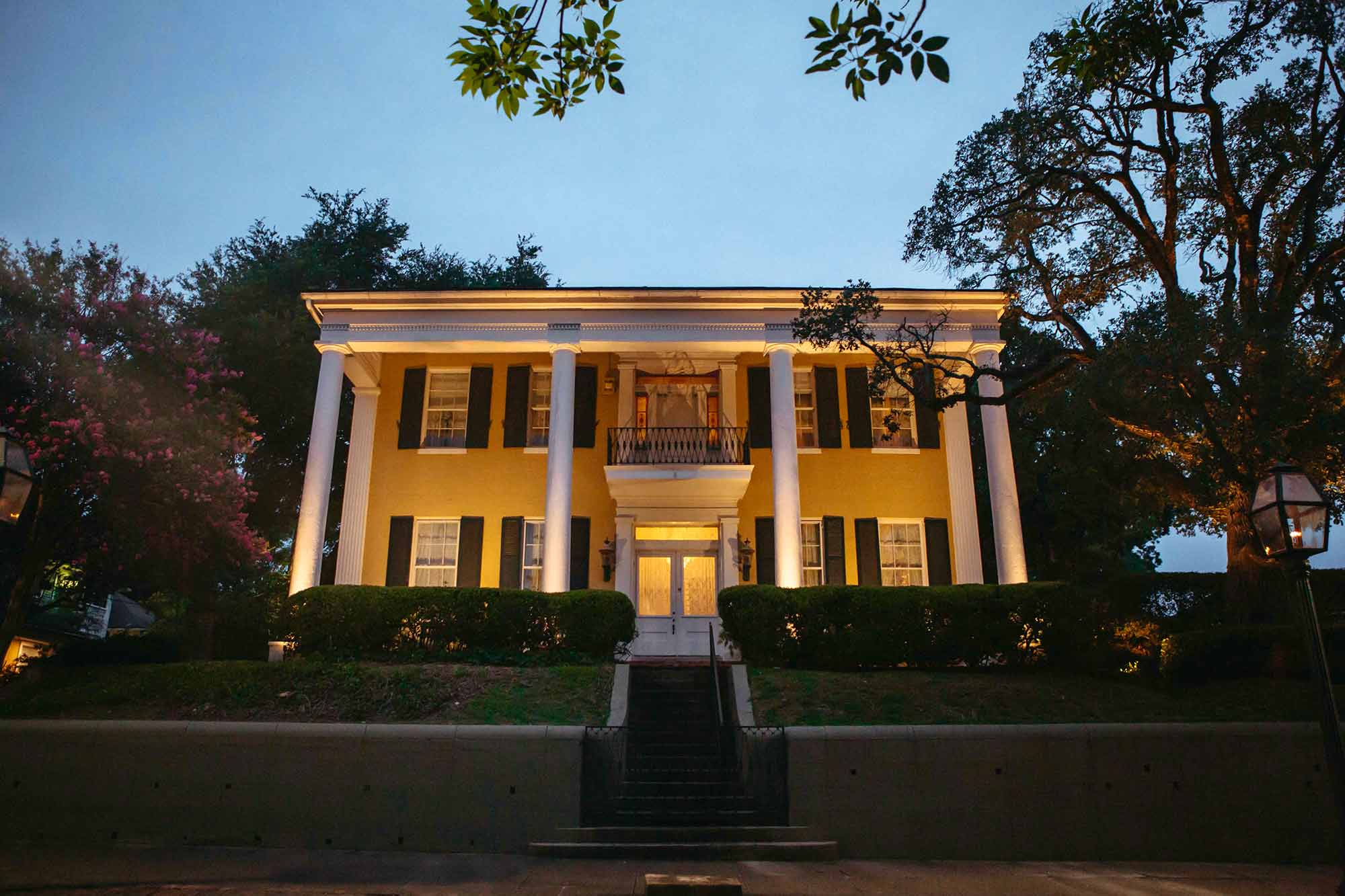
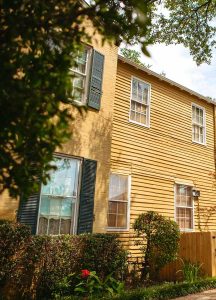
A view of the home’s exterior, a mixture of wood and brick, offers clues to its construction history. Anchuca, named for the Choctaw word meaning “happy home,” began as a two-story wood frame cottage built circa 1830 by local politician J. W. Mauldin. The overall Greek revival-style structure seen today was added during the 1840s and early 1850s and is attributed to Jane and Victor Wilson — Vicksburg’s most influential citizens of their time. Mr. Wilson was one of the town’s most successful merchants, establishing coal and ice businesses only blocks away from Anchuca. The Wilsons and their seven children (six girls and one boy) survived the horrific 47-day siege of the city only to succumb to family tragedy just weeks after Vicksburg’s surrender to Union forces on July 4, 1863. Their only son and infant daughter died due to the unsanitary conditions and malnutrition that families endured during the siege. With the death of Mr. Wilson in 1865, Mrs. Wilson, overwrought with emotions and economic ruin, sold the property.
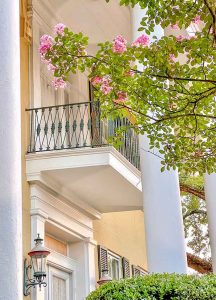 Joseph Emory Davis, patriarchal brother to Confederate President Jefferson Davis, the owner of Hurricane Plantation in Warren County, Mississippi and a great American pioneer in his own right, lived here until his death on September 18, 1870, at the age of 87. Jefferson Davis was reunited with his brother (and father figure) at the home in January of 1869. The town’s legend testifies that it was during this stay that Jefferson Davis spoke to friends and neighbors from Anchuca’s front balcony, marking this site for many historians and Southerners alike as one of the last public addresses to the people of Vicksburg by Jefferson Davis.
Joseph Emory Davis, patriarchal brother to Confederate President Jefferson Davis, the owner of Hurricane Plantation in Warren County, Mississippi and a great American pioneer in his own right, lived here until his death on September 18, 1870, at the age of 87. Jefferson Davis was reunited with his brother (and father figure) at the home in January of 1869. The town’s legend testifies that it was during this stay that Jefferson Davis spoke to friends and neighbors from Anchuca’s front balcony, marking this site for many historians and Southerners alike as one of the last public addresses to the people of Vicksburg by Jefferson Davis.
The mansion at 1010 First East Street became known by its name Anchuca in 1955, as the first “home of historic significance” to open its doors “for public inspection” (The Sunday Post-Herald,” November 27, 1955).
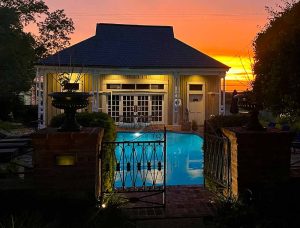 As one of Mississippi’s finest bed and breakfast inns that survived the horrors of the American Civil War, this grand 1830s antebellum mansion offers luxurious comfort in a relaxed setting and is home to Vicksburg’s #1 restaurant — Restaurant Anchuca!
As one of Mississippi’s finest bed and breakfast inns that survived the horrors of the American Civil War, this grand 1830s antebellum mansion offers luxurious comfort in a relaxed setting and is home to Vicksburg’s #1 restaurant — Restaurant Anchuca!
Complete with 10 upscale overnight guest rooms, a guest house, a gorgeous swimming pool, and nearly one-acre of beautifully manicured grounds in the heart of Vicksburg’s earliest commercial and residential area, Anchuca offers its guests a hearty dose of Southern hospitality and happiness that will leave you counting the days until you return!
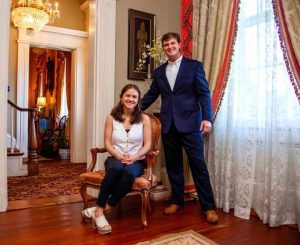 Today, Anchuca is privately owned by Anna Kate and Sam Andrews of Vicksburg. Anna Kate, a ninth-generation Vicksburg native, descends from the family that first bottled Coca-Cola in the city. Sam, a sixth-generation Vicksburg native, is a descendant of the first civilian killed during the Civil War in Vicksburg. In 2022, the couple purchased Anchuca from longtime owner and fellow Vicksburg native, Tom Pharr, with the support of Delta Bank of Vicksburg.
Today, Anchuca is privately owned by Anna Kate and Sam Andrews of Vicksburg. Anna Kate, a ninth-generation Vicksburg native, descends from the family that first bottled Coca-Cola in the city. Sam, a sixth-generation Vicksburg native, is a descendant of the first civilian killed during the Civil War in Vicksburg. In 2022, the couple purchased Anchuca from longtime owner and fellow Vicksburg native, Tom Pharr, with the support of Delta Bank of Vicksburg.
Anna Kate also owns and operates Macarons by AK, a specialty bakery she founded in 2020 known for its custom macarons, cakes and other desserts. She previously served as Director of Development and Alumni Affairs at Vicksburg Catholic School, where both she and Sam are graduates. Sam serves as a Senior Advisor in the Mississippi Governor’s Office and formerly worked as Chief of Staff in the Vicksburg Mayor’s Office.
Today, Anchuca ranks in the top 25% of all AAA-inspected properties in North America for cleanliness and remains nationally recognized as one of the South’s leading historic travel destinations.
Together, Anna Kate and Sam are proud to honor Tom Pharr’s legacy of preservation and hospitality, devoting themselves to the care and continuation of Anchuca, ensuring its story is lived and cherished by generations to come.
